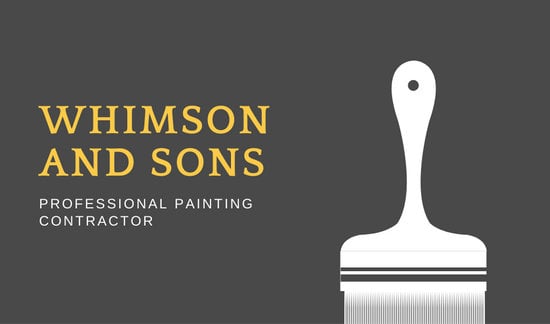Examine The Function Of Seasonal Factors In The Success Of Commercial Outside Paint And Discover The Best Times To Protect Long Lasting Results For Your Task
Examine The Function Of Seasonal Factors In The Success Of Commercial Outside Paint And Discover The Best Times To Protect Long Lasting Results For Your Task
Blog Article
Produced By-McLamb Decker
When you're intending an industrial exterior paint project, seasonal factors can make or break your results. https://interior-house-painters-n11100.is-blog.com/41603688/seven-necessary-tips-for-picking-the-best-paint-experts 'll want to take into consideration exactly how temperature and moisture impact paint application and drying times. Selecting the right season can guarantee your paint sticks effectively and lasts longer. Yet which seasons are truly the best for this kind of job? Let's discover the crucial elements that can affect your project's success.
The Effect of Temperature Level on Paint Application
When you're intending a business external paint job, the temperature can significantly impact how well the paint sticks and dries out.
Ideally, you wish to repaint when temperature levels range between 50 ° F and 85 ° F. If it's as well chilly, the paint may not cure effectively, leading to issues like peeling or cracking.
On the other side, if it's also hot, the paint can dry out too promptly, protecting against proper bond and resulting in an irregular surface.
You should also take into consideration the time of day; early morning or late afternoon supplies cooler temperature levels, which can be extra favorable.
Constantly inspect the producer's referrals for the particular paint you're using, as they often supply guidance on the suitable temperature range for optimum results.
Humidity and Its Result on Drying Times
Temperature level isn't the only ecological variable that affects your commercial exterior painting task; humidity plays a substantial duty too. High moisture levels can reduce drying times substantially, impacting the overall high quality of your paint work.
When the air is filled with wetness, the paint takes longer to heal, which can result in issues like inadequate adhesion and a higher danger of mold development. If you're painting on a specifically damp day, be planned for prolonged wait times between coats.
It's critical to keep an eye on regional climate condition and strategy accordingly. Ideally, aim for moisture levels in between 40% and 70% for optimal drying.
Keeping these factors in mind guarantees your job remains on track and supplies a lasting finish.
Best Seasons for Commercial Outside Paint Projects
What's the best time of year for your business outside painting projects?
Springtime and early loss are typically your best choices. During these periods, temperature levels are mild, and moisture degrees are commonly reduced, creating perfect problems for paint application and drying.
Avoid summer's intense heat, which can create paint to dry also quickly, resulting in inadequate adhesion and coating. Similarly, winter months's cold temperatures can hinder proper drying and curing, running the risk of the durability of your paint work.
Aim for days with temperatures in between 50 ° F and 85 ° F for ideal outcomes. Bear in mind to examine the neighborhood weather report for rainfall, as damp problems can spoil your job.
Planning around these factors guarantees your paint job runs efficiently and lasts longer.
Final thought
Finally, planning your industrial external painting jobs around seasonal factors to consider can make a substantial distinction in the outcome. By organizing job during the perfect temperature levels and moisture levels, you'll guarantee much better adhesion and drying times. Bear in mind to keep an eye on local weather prediction and select the correct time of year-- springtime and very early fall are your best choices. Taking these actions will certainly help you attain a resilient and professional coating that lasts.
